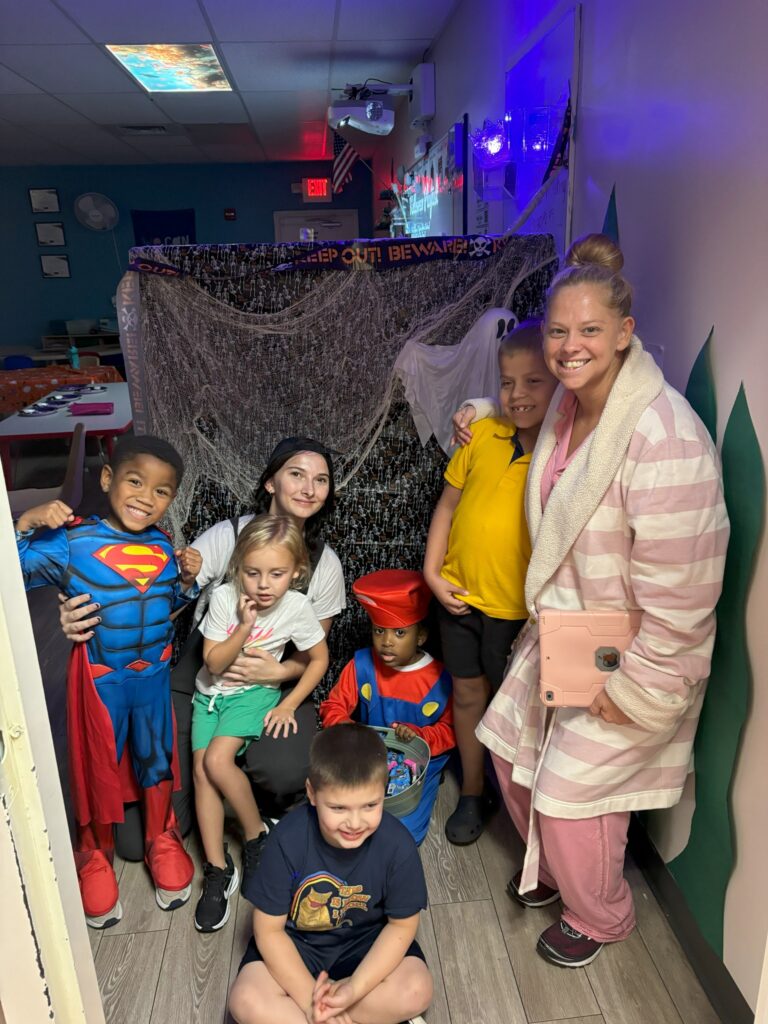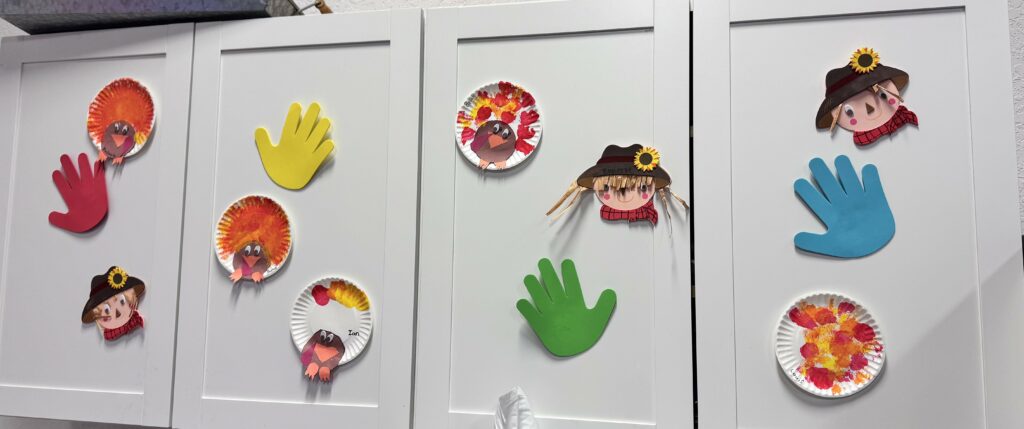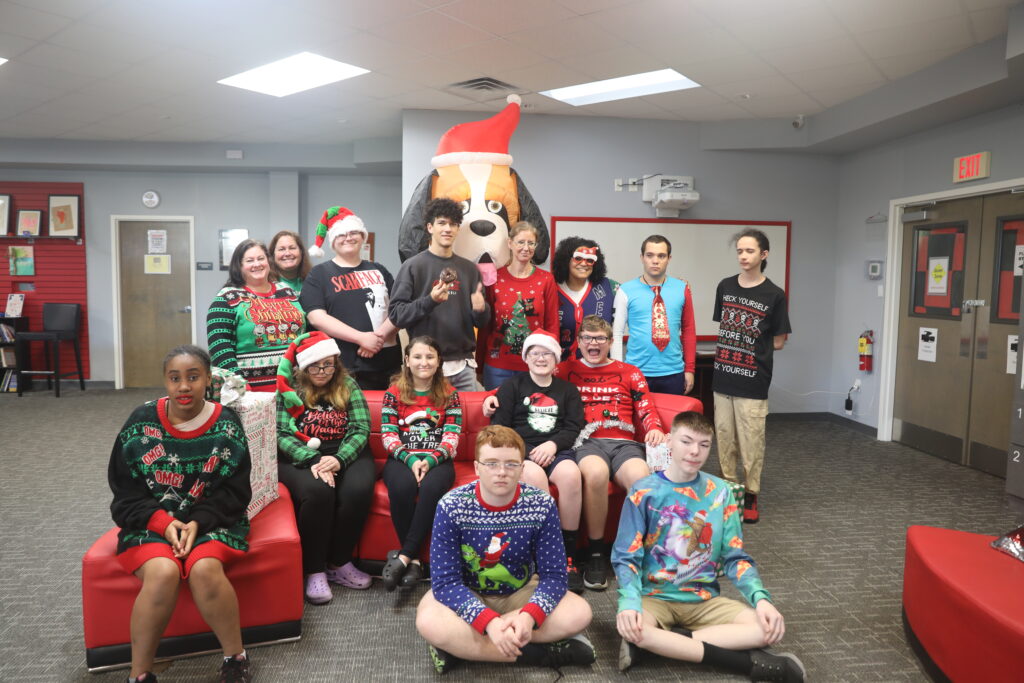Navigating holiday celebrations can be a unique and sometimes challenging experience for families with neurodivergent learners, but it is also an opportunity to create inclusive and joyful environments. As we deck our halls and prepare for festivities like Halloween, Thanksgiving, Christmas, or even Yom Kippur, it’s essential to ensure that every member of the family feels involved and valued. By adopting practical strategies and incorporating sensory-friendly activities, we can transform these occasions into memorable experiences for everyone. In this blog post, you’ll find a treasure trove of tips and tricks shared by experts and parents alike, designed to help you embrace the holiday spirit with optimism and empathy. Let’s embark on this journey together, making each celebration a joyous occasion for all.
Understanding Neurodivergence in Holidays
Celebrating Inclusively
Celebrating holidays inclusively involves recognizing the diverse needs of neurodivergent learners and adapting traditions to suit everyone. Start by understanding each individual’s sensory preferences. For some, bright lights or loud noises may be overwhelming, so consider quieter, softer decorations and activities. Create a safe space where children can retreat if festivities become too intense. Encouraging participation is key. Invite children to help with planning, offering choices in activities or roles they might enjoy. This could be as simple as selecting decorations or deciding on the menu. Incorporate sensory-friendly activities, such as tactile projects or quiet storytelling, to keep everyone engaged. Communication is vital. Discuss plans with your child beforehand, explaining what to expect and allowing them to express concerns. By making these thoughtful adjustments, you can cultivate an environment where neurodivergent learners feel included, respected, and valued, transforming the holiday season into a truly shared experience.

Overcoming Sensory Overload
Sensory overload can be a significant challenge during holiday celebrations, especially for neurodivergent individuals. To mitigate this, it’s crucial to plan ahead and create a calming environment. Begin by identifying potential triggers, such as flashing lights, strong scents, or loud music. Where possible, minimize these elements or offer alternatives, like dimmer lighting or quiet background music. Introducing sensory breaks can be highly beneficial. Designate a quiet room or corner where individuals can retreat to decompress and reset if they start feeling overwhelmed. Equip this space with calming aids, such as headphones, weighted blankets, or fidget toys. Incorporating a predictable schedule can also help. Inform your child about the day’s events in advance, allowing them time to mentally prepare. Encourage them to communicate their needs and preferences openly. By taking these proactive steps, you can help reduce sensory overload, ensuring the holiday experience remains enjoyable and stress-free for everyone involved.
Preparing for Halloween
Costume Selection Tips
Selecting a costume can be a delightful yet challenging task, especially for neurodivergent learners. Sensory sensitivities can make certain materials or designs uncomfortable. Start by involving your child in the selection process, offering choices that align with their interests while being mindful of their sensory preferences. Look for costumes made from soft, breathable fabrics that minimize irritation. Avoid outfits with restrictive elements, such as tight masks or intricate accessories, which might cause discomfort. Consider the practicality of the costume. Ensure it’s easy to put on and take off, allowing for independence and comfort. If traditional costumes are overwhelming, encourage creative alternatives like themed t-shirts or simple DIY outfits. This approach can maintain the spirit of Halloween while ensuring your child feels at ease. By focusing on comfort and personal preferences, you can help your child enjoy the festivities with confidence and joy, turning costume selection into a positive and inclusive experience.

Managing Trick-or-Treating
Trick-or-treating can be an exciting yet overwhelming experience, particularly for neurodivergent children. Preparation is key to ensuring a positive outing. Begin by discussing the plan with your child, outlining what to expect and setting clear boundaries. Consider practicing the route beforehand to familiarize them with the environment and potential sensory triggers. When the day arrives, choose a time when crowds are minimal to reduce sensory overload. Equip your child with noise-canceling headphones or sunglasses if bright lights and loud sounds are a concern. Encourage them to use visual aids or cue cards to communicate if verbal interaction becomes challenging. Introduce a buddy system by inviting a trusted friend or family member to join, providing additional support and familiarity. Remember to take breaks as needed and reassure your child that it’s perfectly okay to stop whenever they feel overwhelmed. By implementing these strategies, you can help make the trick-or-treating experience enjoyable and stress-free.
Embracing Thanksgiving Traditions
Creating a Comfortable Setting
Creating a comfortable setting for Thanksgiving is essential to ensure neurodivergent learners feel at ease. Begin by considering the dining environment. Opt for a calm and organized space, free from excessive clutter and distractions. Adjust lighting to a softer level and control noise levels, possibly through soft music or white noise machines to minimize overwhelming sounds. Arrange seating to include familiar faces and ensure your child has a clear path to a retreat area if they need a sensory break. Introduce familiar items, such as a favorite cushion or toy, to provide comfort and a sense of security. When it comes to the menu, offer a variety of foods, including familiar options alongside traditional dishes, to accommodate diverse tastes and textures. Encourage your child to participate in meal preparation or setting the table to foster a sense of involvement. By thoughtfully setting the scene, you can create a welcoming and inclusive atmosphere for everyone.
Involving Children in Preparations
Involving children in Thanksgiving preparations can foster a sense of belonging and engagement for neurodivergent learners. Start by assigning age-appropriate tasks that align with their interests and abilities. This could range from helping in the kitchen with simple cooking tasks to crafting decorations. Providing clear instructions and demonstrating each step can enhance understanding and confidence. Encourage creativity by allowing them to personalize elements, such as designing place cards or selecting table settings. Using visual schedules or checklists can help them follow along and anticipate what comes next. Incorporate sensory-friendly activities, like stirring ingredients or arranging flowers, to make the process enjoyable. Recognize their contributions with praise, reinforcing their sense of accomplishment and inclusion. By engaging them actively in the preparations, you not only build their confidence and skills but also create lasting family memories that celebrate their unique contributions and strengths during this festive occasion.

Navigating Christmas Celebrations
Decorating with Sensitivity
Decorating with sensitivity during Christmas helps accommodate the needs of neurodivergent learners, making the festive environment welcoming for everyone. Begin by selecting decorations that are visually appealing yet not overwhelming. Opt for calming colors and patterns, and avoid flashing lights or loud ornaments that might cause sensory overload. Consider involving your child in the decoration process, allowing them to choose or create decorations that resonate with their preferences. Introduce tactile elements, such as soft fabrics or smooth surfaces, to offer comforting sensory experiences. Establish designated decoration-free zones to provide a retreat space if needed. Be mindful of scents, as strong fragrances can be overpowering; choose mild or natural aromas instead. By focusing on sensory-friendly elements and including your child in the process, you create a festive atmosphere that is both inclusive and enjoyable, ensuring that everyone can partake in the Christmas cheer in a way that feels comfortable and joyful.
Planning Gift-Giving Activities
Planning gift-giving activities with consideration for neurodivergent learners can enhance the joy and inclusivity of Christmas celebrations. Start by selecting gifts that align with the child’s interests and sensory preferences. Consider items that provide a soothing sensory experience, such as weighted blankets or tactile toys. When organizing gift exchanges, ensure the environment is calm and structured. Use visual aids, like a schedule or checklist, to guide the order of events and manage expectations. Encourage children to participate in wrapping gifts, offering opportunities to personalize their contributions with drawings or stickers. If large gatherings are overwhelming, consider smaller, intimate gift exchanges to reduce stress. Prepare your child by discussing the gift-giving process, allowing them to practice responses if needed. By tailoring the gift-giving experience to accommodate individual needs and preferences, you can create a festive atmosphere that celebrates each child’s unique qualities, fostering a sense of inclusion and happiness during the holiday season.

Observing Jewish Holidays
Engaging in Rosh Hashanah Activities
Engaging neurodivergent learners in Rosh Hashanah activities involves adapting traditions to suit individual needs while maintaining the spirit of the celebration. Begin by introducing the significance of Rosh Hashanah through storytelling or visual aids, making the concepts accessible and relatable. Involve children in preparation tasks, such as setting the table or preparing symbolic foods like apples and honey, which can be tactile and enjoyable experiences. Create art projects that reflect the themes of renewal and reflection, such as crafting greeting cards or decorating with symbolic motifs. Opt for interactive and sensory-friendly activities, like blowing the shofar or engaging in music and movement, to maintain interest and participation. Offer a quiet space for breaks if the festivities become overwhelming, ensuring your child feels comfortable. By incorporating these inclusive approaches, you foster a sense of belonging and understanding, allowing neurodivergent learners to fully engage in the meaningful traditions of Rosh Hashanah.
Preparing for Yom Kippur
Preparing neurodivergent learners for Yom Kippur involves creating a supportive and understanding environment that respects the solemnity of the day. Start by discussing the significance of Yom Kippur in simple terms, focusing on themes of reflection and atonement. Use storybooks or visual aids to help convey these concepts. Consider the sensory aspects of the day, especially during synagogue services or family gatherings. If attending services, find a seat near an exit to allow for easy breaks if needed. Offer sensory tools, like fidget items or noise-canceling headphones, to help manage sensory overload. Encourage participation in age-appropriate traditions, such as reciting prayers or lighting candles, to foster a sense of involvement. For those who find fasting challenging, explain the concept and offer alternatives, like participating in acts of kindness or reflection. By tailoring the preparation and observance of Yom Kippur to accommodate individual needs, you create an inclusive and meaningful experience for all.
Practical Tips and Resources
Seeking Expert Advice
Seeking expert advice can be invaluable for families navigating holiday celebrations with neurodivergent learners. Professionals such as occupational therapists, psychologists, or special education teachers can provide tailored strategies that address sensory sensitivities and behavioral challenges. They can offer guidance on creating structured environments and suggest activities that promote inclusion and engagement. Additionally, experts can help interpret your child’s specific needs and preferences, offering personalized solutions for holiday participation. Listening to podcasts or attending webinars featuring experts and parents can provide fresh insights and shared experiences. Resources like “Pam and the Purple Couch Podcast” can be particularly helpful, as they explore practical tips and advice from various experts. Engaging with support groups or online communities can also provide encouragement and ideas from those who have faced similar challenges. By accessing expert resources, you equip yourself with the tools and knowledge to create inclusive, meaningful, and joyful holiday experiences for your entire family.
Utilizing Supportive Communities
Utilizing supportive communities can make a significant difference for families celebrating holidays with neurodivergent learners. Local support groups and online forums provide spaces to share experiences, challenges, and advice, fostering a sense of connection and understanding. Engaging with these communities allows you to learn from others who have successfully navigated similar situations, gaining practical tips and reassurance. Social media platforms and dedicated websites often host groups where parents and educators share resources, from sensory-friendly event recommendations to inclusive activity ideas. Participating in community events or meet-ups specifically designed for neurodivergent individuals can also offer valuable social interaction in a comfortable setting. Additionally, reaching out to local organizations or schools may provide access to workshops or events tailored to your child’s needs. By tapping into these supportive networks, families can build a robust framework of encouragement and inspiration, enhancing their ability to create inclusive and joyful holiday experiences for neurodivergent learners.

